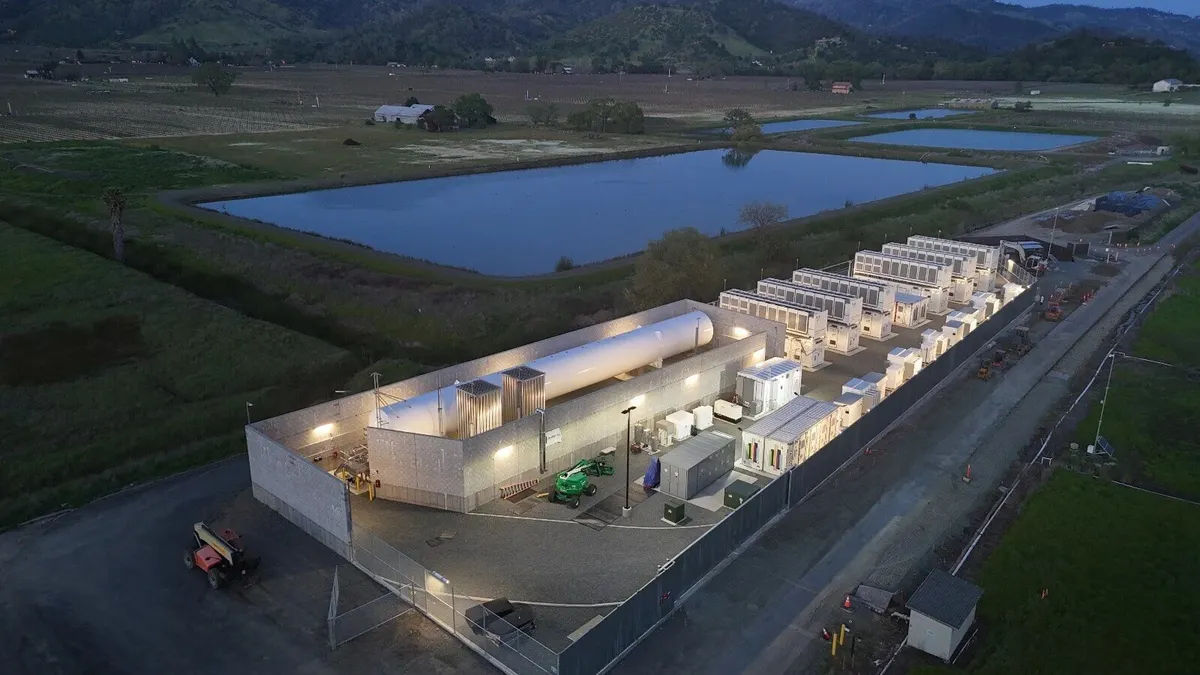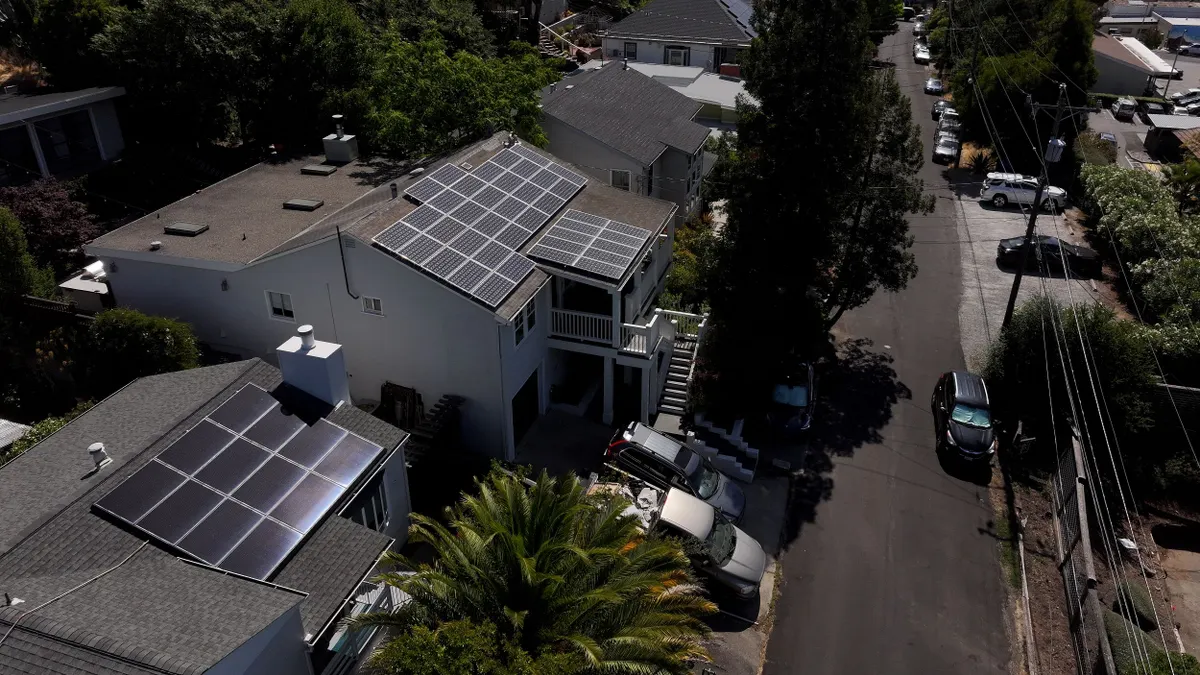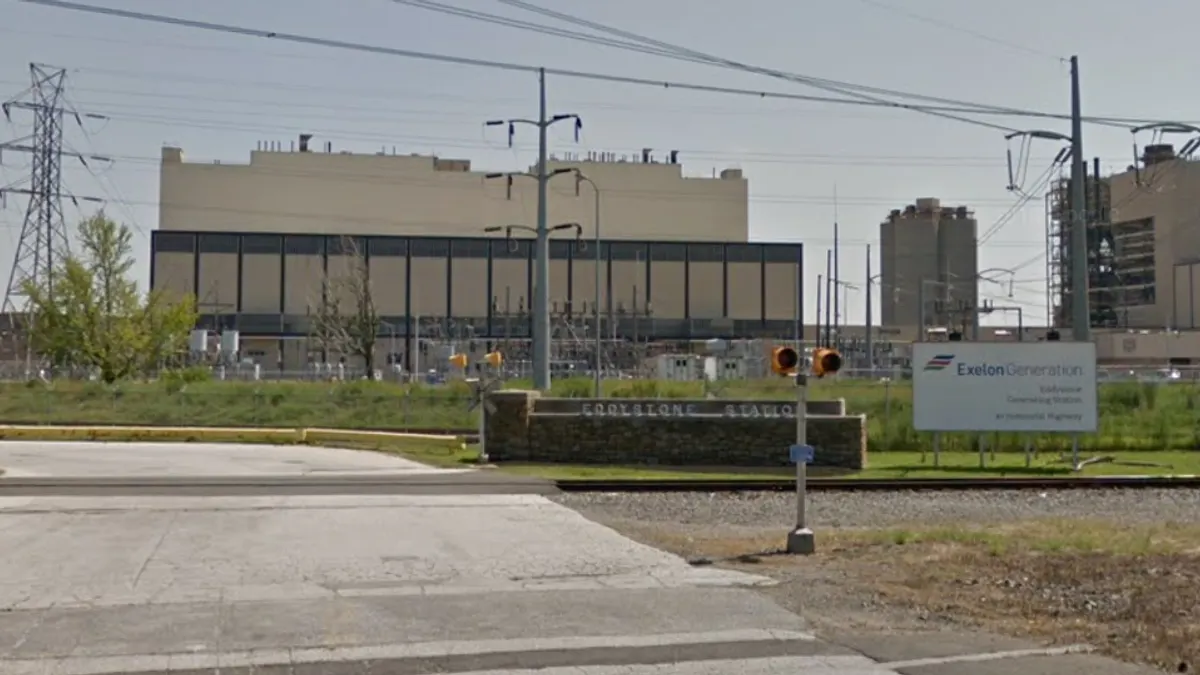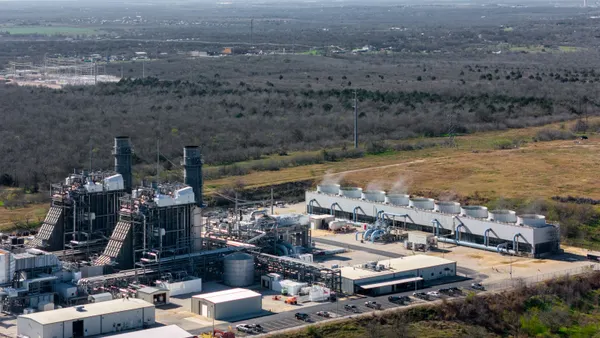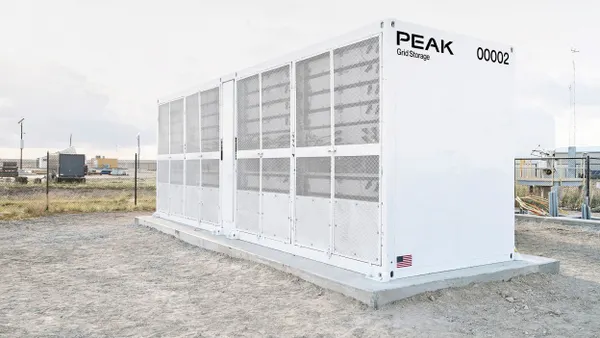Dive Brief:
-
A first-of-its-kind hydrogen- and battery-powered microgrid project is up and running in the remote California town of Calistoga, according to a Sept. 25 announcement by Pacific Gas and Electric Company and Energy Vault.
-
The Calistoga Resiliency Center provides backup power to the town of 1,600 by using hydrogen fuel cells to charge lithium-ion batteries on a site that was too small to allow for wind or solar power generation, the companies said.
-
Frank Wolak, president and CEO of the Fuel Cell and Hydrogen Energy Association, said in an interview that interest in hydrogen fuel cells has grown over the past year or two as data centers and other large-load customers seek alternatives to diesel generators.
Dive Insight:
The community of Calistoga has yet to call on the resiliency center as backup, but tests show it can power the town for at least 48 hours, according to Jeremy Donnell, senior manager of microgrid strategy implementation at PG&E.
The company says it believes the hybrid system is the very first of its kind. The 293-MWh microgrid system replaced a diesel generator that PG&E deployed in Calistoga in 2019-2020 to provide backup generation in the event of a public safety power shutoff, Donnell said in an interview.
Developer Energy Vault came up with the hybrid battery/hydrogen fuel cell design in response to PG&E's request for a solution that could eliminate the diesel generator while occupying the same footprint and for no more than twice the cost.
The project mostly draws energy from on-site hydrogen fuel cells that are hooked up to a 130-foot liquid hydrogen storage tank, Donnell said. A third-party vendor refills the tank with hydrogen; the site lacks the space needed for hydrogen production or for wind or solar generation to charge batteries.
PG&E doesn't anticipate replacing its other diesel generators with fuel cells because the company isn't conducting as many broad-scale public safety power shutoffs as it used to, Donnell said. But the project yielded valuable information about how to connect similar projects to the company's grid, he added.
Wolak said large-load customers like data centers are exploring fuel cells as they seek reliable power solutions with greater duration than lithium-ion batteries and lower emissions than fossil fuel generators.
In addition to remote sites like Calistoga, fuel cells could also be used in urban settings where space is limited, and where nearby residents may object to diesel generator noise and emissions, he said.
Growing demand for natural gas has also, somewhat unexpectedly, driven new interest in fuel cells, Wolak said.
Many fuel cells can use natural gas in the place of hydrogen, and since the gas is not burned, it does not produce on-site emissions. Building out the nation's gas distribution systems means more sites could have access to natural gas and could use fuel cell technology without the need for relatively high-cost hydrogen fuel, he said.
Fuel cells also got a boost from the One Big Beautiful Bill Act, Wolak said. While the bill cut tax credits for many other sources of renewable generation, it preserved a tax credit for hydrogen storage infrastructure and renewed a fuel cell tax credit that had been set to expire.
“You will see a lot more storyboarding around the fuel cell given this combination of power demand growth everywhere, and ... an uplift from the tax credits,” he said. “Watch this space, you will see more.”


